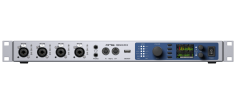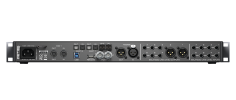As the UFX III no longer have Thunderbolt support there are some that are not happy that. The following post by
@MC_RME is a nice summary from a manufacturer of audio interfaces point of view of Thunderbolt support from Microsoft and Intel.
>>>
You obviously have no clue what you talk about. Let me give you some facts:
- Intel never wanted audio interfaces with Thunderbolt. They put up numerous hoops to go through for this not to happen, but several companies (including us) managed to do it.
- Intel and Microsoft decided in 2019 to no longer support Thunderbolt 1 and Thunderbolt 2. Therefore using a new laptop with TB4 and Windows 11, a UFX+ (asn other TB1 interfaces) will no longer work via TB. Also not when using the known adapters!
- Intel declared the TB3 chips EOL last year. All TB interfaces that one can still buy are made from stock of these chips. One can not buy these chips anymore, so sooner or later all existing TB audio interfaces will be gone.
- TB4 as in USB4 is much too complicated to add it to an audio interface. Specialized chips that would allow so also don't exist. And what would it be good for when 99% of the existing audio interfaces don't even need USB3?
- The Wintel decision to cease support, as dumb as it is, makes clear that Intel sees their interface as a typical computer mass product. After a few years please move on and buy something new...that's not what we (and many others) like or support.
- The current situation is also quite unique as macOS still fully supports TB1, in the latest OS and hardware (M2). The reason is that Apple does not use Intel chips anymore, even TB is now made by Apple, so whatever Intel and MS dream of, Apple can do differently. And so far they do. So the UFX+ (and others) still work on that platform via Thunderbolt (TB4 ports with the usual adapters).
With TB gone as option there only remain PCIe and USB 2/3. And it doesn't look like that will change in the forseeable future.
Regards
Matthias Carstens
RME
<<<

